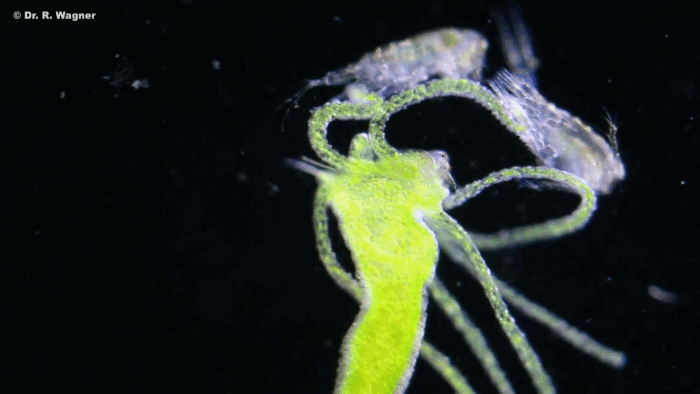
Using this new computer program, Han et al. The program was able to identify all the behaviors previously classified by humans, as well as new types that had been missed by human observation.
HYDRA ANIMAL HOW TO
The computer algorithms can learn how to recognise different behaviors in two ways: by learning from examples already classified by humans (known as ‘supervised learning’) or by letting it pick out different patterns by itself (known as ‘unsupervised learning’). borrowed cutting-edge techniques from the field of computer vision to create a computer program that could automatically analyse hours of videos of freely-moving Hydra and classify their behavior automatically. This is particularly difficult because Hydra’s bodies can change shape in different situations. However, to realise this potential, scientists need a quick way of automatically recognising different Hydra behaviors, such as contracting, bending, tentacle swaying, feeding or somersaulting. Thanks to Hydra’s transparent body, modern imaging techniques can be used to observe the activity of their whole nervous system all at once, while the animal is engaged in different actions. One promising opportunity comes from studying a small freshwater organism called Hydra, one of the most primitive animals with a nervous system. But to capture all the different actions an animal generates, faster, more objective methods of systematically classifying and quantifying behavior would be ideal. Because of this, reseachers normally only study one particular behavior, in a piecemeal fashion. This approach is subject to human error and bias, and is also very time consuming. However, most of these studies have traditionally relied on human observers to recognise and classify different behaviors such as movement, rest, grooming or feeding. How do animals control their behavior? Scientists have been trying to answer this question for over 2,000 years, and many studies have analysed specific behaviors in different animals. This robustness could reflect a homeostatic neural control of "housekeeping" behaviors which could have been already present in the earliest nervous systems. Our analysis indicates that the fundamental behavioral repertoire of Hydra is stable. Using this analysis pipeline, we quantified 6 basic behaviors and found surprisingly similar behavior statistics across animals within the same species, regardless of experimental conditions. We also identified unannotated behaviors with unsupervised methods. We imaged freely behaving Hydra, extracted motion and shape features from the videos, and constructed a dictionary of visual features to classify pre-defined behaviors. Here, we developed an automatic behavior analysis pipeline for the cnidarian Hydra vulgaris using machine learning.



Quantitative behavioral studies have been hindered by the subjective and imprecise nature of human observation, and the slow speed of annotating behavioral data. Animal behavior has been studied for centuries, but few efficient methods are available to automatically identify and classify it.


 0 kommentar(er)
0 kommentar(er)
